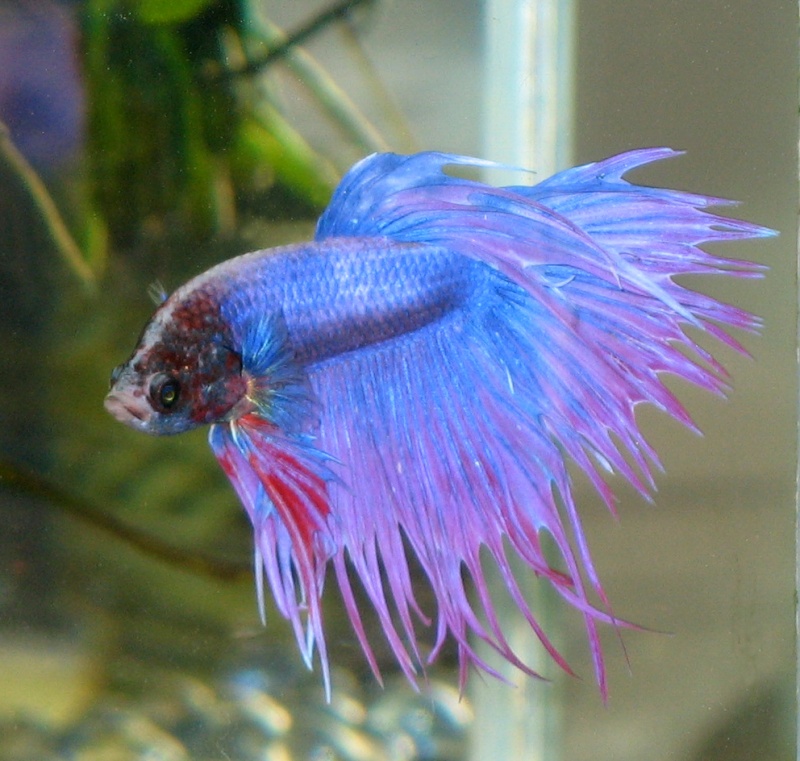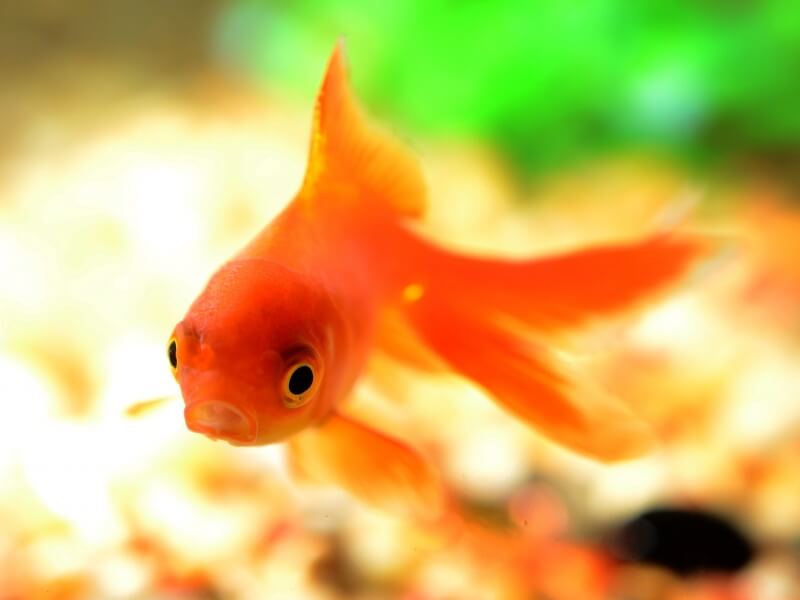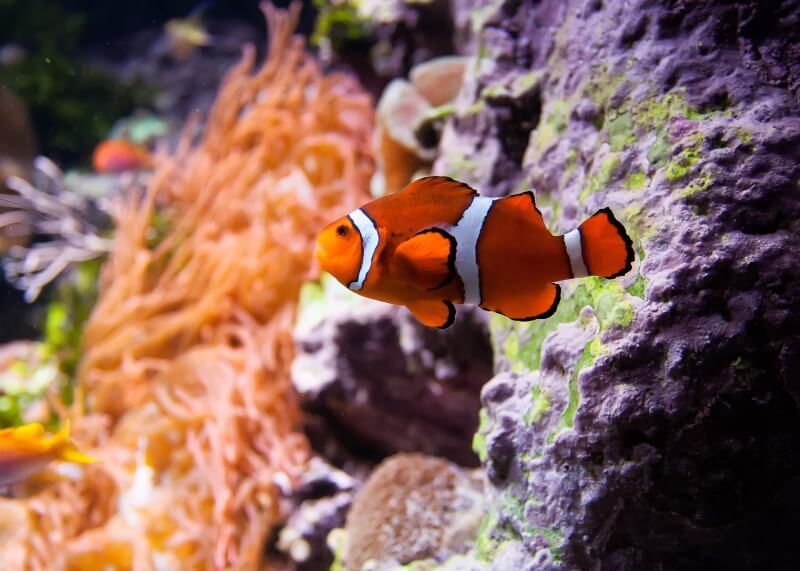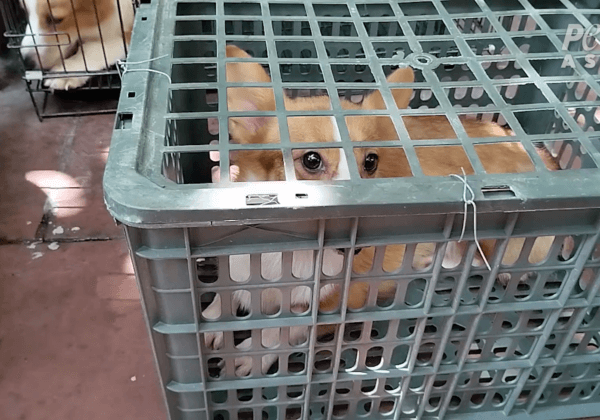Fish in Tanks
Each year, millions of fish are purchased as decorative ornaments or “starter pets” for young children. Few people realize just how much fish suffer before they reach pet stores, and few know how to care for them properly once they get them home.

Approximately 95 percent of the saltwater fish sold in pet shops are captured from the wild, mostly from the waters around Indonesia, the Philippines, Fiji, and other Pacific islands. Fish divers often squirt cyanide or other poisons into the coral reefs where the fish live. Cyanide is used to stun fish so that they will drift out of the reef for easy collection. It also sends many fish into spasms, making them easy to grab by hand or net. Marine experts estimate that half the affected fish die on the reef, and 40 percent of those who survive the initial poisoning die before they reach an aquarium. Cyanide also kills the coral reefs themselves, and marine biologists rank it as one of the biggest dangers in Southeast Asian waters.

About 90 percent of the freshwater fish sold in stores are raised on fish farms. Goldfish, for example, are usually bred and raised in giant tubs on farms that raise as many as 250 million fish a year. Many of them are doomed to live in plastic bags or tiny glass bowls, neither of which provides the space or oxygen that goldfish need. For this reason, the city of Monza, Italy, banned keeping goldfish in bowls. One sponsor of the law pointed out that bowls give fish “a distorted view of reality.”
Fish are intelligent, sensitive animals who feel pain and think, just as cats and dogs do. In fact, scientists at Oxford University have discovered that some fish can learn faster than dogs.
Fish crave stimulation from other fish and their environment. They are meant to dwell in the majestic seas—even the biggest, best-maintained aquarium can’t compare to the open ocean.
Fish are living beings, not artwork, yet some fish breeders “paint” fish by injecting fluorescent dye into their bodies or alter their genetic makeup to make them more attractive to buyers. Pet shops, discount superstores, florists, and even online catalogs sell “decorative” betta fish (Siamese fighting fish) in tiny cups or flower vases. The fish often live in just a few ounces of water, which isn’t enough for them to turn around in, much less swim in.
When you purchase fish or support businesses or fairs that give fish away in contests or promotions, it encourages the pet trade to continue kidnapping fish from their ocean homes and breeding them on crowded, filthy farms. If you enjoy watching fish, consider downloading one of the many colorful and realistic fish-themed computer screensavers available on the Web.
As Gill, one of the characters in Finding Nemo—a charming movie about a clownfish who struggles to escape from an aquarium and find his way back to his father in the ocean—says, “Fish aren’t meant to be in a box, kid. It does things to ya.”
But don’t despair if you already have fish. Although there’s no safe way to return captive fish to their natural environments—which are often located in far-away regions of the world—because of difficulties in locating a suitable habitat and the possibility of introducing disease to existing fish, the following are some ways that you can make your fish friends happier:
- Provide a stable environment. Keep the tank on a smooth surface that won’t rock or jiggle, and place it away from windows, direct sunlight, and temperature extremes. Tanks should generally be kept between 20°C and 24°C.
- Make sure that your fish get proper nutrients. That jar of flakes might not be what your fish would choose to eat. The type and amount of food varies from fish to fish.
- Provide at least 24 square inches of water for every 1 inch of fish. Fish become frustrated and unhappy when kept in bowls and small tanks.
- House fish in a large filtered tank instead of bowls, which don’t provide enough space or oxygen. All tanks should have a pump to keep water flowing continuously.
- Decorate! Bare homes make for deprived fish. Place structures in the tank for your fish to investigate. A few plants, plastic or real, will make your fish feel more at home. Some fish will use the tank-lining rock bits to build nests for themselves.
- Keep them in a quiet area. Fish “talk” with each other through a variety of low-frequency sounds. The pumps and filters necessary in many home aquariums can interfere with this communication, so use quiet equipment, and don’t place radios or televisions near your fish.










